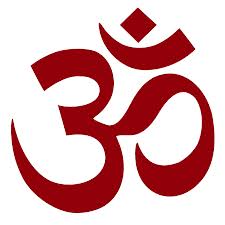Hindu Wisdom
 Hinduism is India’s indigenous religious and cultural system, followed today by nearly one billion adherents, mostly in India, but with large populations in many other countries. Also called Sanatana Dharma, “eternal religion”, Hinduism is the world’s most ancient religion and encompasses a broad spectrum of philosophies ranging from pluralistic theism to absolute monism. It is a family of myriad faiths with four primary denominations: Saivism, Vaishnavism, Shaktism and Brahmanism. These four hold such divergent beliefs that each is a complete and independent religion. Yet, they share a vast heritage of culture and belief—karma, dharma, reincarnation, all-pervasive Divinity, temple worship, sacraments, manifold deities, the guru-shishya tradition and a reliance on the Vedas as scriptural authority.
Hinduism is India’s indigenous religious and cultural system, followed today by nearly one billion adherents, mostly in India, but with large populations in many other countries. Also called Sanatana Dharma, “eternal religion”, Hinduism is the world’s most ancient religion and encompasses a broad spectrum of philosophies ranging from pluralistic theism to absolute monism. It is a family of myriad faiths with four primary denominations: Saivism, Vaishnavism, Shaktism and Brahmanism. These four hold such divergent beliefs that each is a complete and independent religion. Yet, they share a vast heritage of culture and belief—karma, dharma, reincarnation, all-pervasive Divinity, temple worship, sacraments, manifold deities, the guru-shishya tradition and a reliance on the Vedas as scriptural authority.
All the cultures of the ancient world look back to a mythical Golden Age, an era of profound inner awareness and simple outer living in which men lived in the presence of the Gods. We find this myth everywhere from classical Latin and Greek writers to the mythical legacy of Egypt, to Persia and India and even to the cultures of the American Indians. Though we may not think that such an age ever really existed or may not be possible at all, this is merely the measure of our own distance from it, our own lack of understanding of our past and future and consequently of our present. It is that aspiration we wish to awaken here the aspiration to a spiritual humanity, a society once more founded on the higher knowledge. – David Frawley, Wisdom of the Ancient Seers.
From the rich soil of Hinduism long ago sprang various other traditions. Among these were Jainism, Buddhism and Sikhism, which emerged as completely distinct religions, disassociated from Hinduism, while still sharing many philosophical insights and cultural values with their parent faith. Though the genesis of the term is controversial, the consensus is that the term Hindu was used by the Persians to refer to the Indian peoples of the Indus Valley as early as 500 BC. Additionally, Indian scholars point to the appearance of the related term Sindhu in the ancient Rig Veda Samhita. Janaki Abhisheki writes (See Religion as Knowledge: The Hindu Concept, p. 1): “Whereas today the word Hindu connotes a particular faith and culture, in ancient times it was used to describe those belonging to a particular region. About 500 BCE we find the Persians referring to ‘Hapta Hindu.’ This referred to the region of Northwest India and the Punjab. The Rig Veda uses the word Sapta Sindhu singly or in plural at least 200 times. Sindhu is the River Indus. Panini, the great Sanskrit grammarian, also uses the word Sindhu to denote the country or region. While the Persians substituted "h" for "s", the Greeks removed the "h" also and pronounced the word as ‘Indoi.’ Indian is derived from the Greek Indoi.”

The Golden Temple in South India.
Hindu scriptures are divided into two categories: Śruti that which is heard (i.e. revelation) and Smriti that which is remembered (i.e. tradition, not revelation). The Vedas constituting the former category are considered scripture by all Hindus. The post-Vedic Hindu scriptures form the latter category; the Mahabharata and the Ramayana are notable epics considered scripture by many sects. A sort of cross-over between the religious epics and Upanishads of the Vedas is the Bhagavad Gita, considered to be revealed scripture by almost all Hindus today. Hindu texts are typically seen to revolve around many levels of reading, namely the gross or physical, the subtle, and the supramental. This allows for many levels of understanding as well, implying that the truth of the texts can only be realized with the spiritual advancement of the reader.
The earliest evidence for prehistoric religion in India date back to the late Neolithic in the early Harappan period (5500–2600 BCE). The beliefs and practices of the pre-classical era (1500–500 BCE) are called the Historical Vedic religion. The oldest Veda is the Rigveda. The Vedas center on worship of deities such as Indra, Varuna and Agni and on the Soma ritual. Fire-sacrifices, called yajna are performed by chanting Vedic mantras chanted but no temples or idols are known.
The 9th and 8th centuries BCE witnessed the composition of the earliest Upanishads. Upanishads form the theoretical basis of classical Hinduism and are known as Vedanta (conclusion of the Veda). The older Upanishads launched attacks of increasing intensity on the rituals. The diverse monistic speculations of the Upanishads were synthesized into a theistic framework by the sacred Hindu scripture, Bhagavad Gita.
The major Sanskrit epics, Ramayana and Mahabharata, were compiled over a protracted period during the late centuries BCE and the early centuries CE. They contain mythological stories about the rulers and wars of ancient India, and are interspersed with religious and philosophical treatises. The later Puranas recount tales about devas and devis, their interactions with humans and their battles against rakshasa.
Increasing urbanization of India in 7th and 6th centuries BCE led to the rise of new ascetic or shramana movements which challenged the orthodoxy of rituals. Mahavira (c. 549–477 BCE), proponent of Jainism, and Buddha (c. 563-483), founder of Buddhism were the most prominent icons of this movement. Shramana gave rise to the concept of the cycle of birth and death, the concept of samsara, and the concept of liberation. Radhakrishnan, Oldenberg and Neumann believed that the Buddhist canon had been influenced by Upanishads.
In early centuries CE several schools of Hindu philosophy were formally codified, including Samkhya, Yoga, Nyaya, Vaisheshika, Purva-Mimamsa and Vedanta. The period between 5th and 9th century CE was a brilliant era in the development of Indian philosophy as Hindu and Buddhist philosophies flourished side by side. Of these various schools of thought the non-dualistic Advaita Vedanta emerged as the most influential and most dominant school of philosophy.












